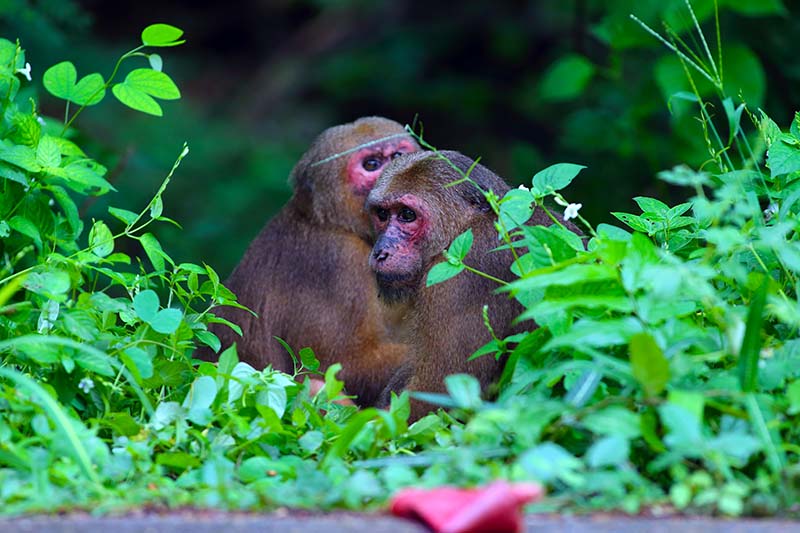You’d have to travel all the way to the island of Madagascar off of the eastern coast of Africa to find the wooly, wide-eyed, white-helmeted Coquerel’s sifaka in its native habitat. One of nine species of lemurs, these diurnal (active in day and night) highly intelligent primates, known as prosimians, evolved millions of years before monkeys and apes, their simian relatives. Primarily treetop dwelling herbivores, the long-legged sifaka is impressively agile, propelling itself distances of over 30 feet as it leaps and swings through the canopy of its dry forest home. For graceful ground travel, sifakas employ a two-legged sideways hopping movement, using their elegantly outstretched arms for balance. Sifakas other amazing creature features include a horizontally projecting set of lower front teeth used for grooming known as a “tooth comb” and a handy secondary tongue which helps keeps that tooth comb spic and span. Living in matriarchal social groups of three to ten animals, sifakas maintain contact with their troop known as a “conspiracy” through various vocalizations including the distinctive shi-fakh, shi-fakh sound from which this lemur species gets its name. Due to 90% loss of their forest habitat and increased hunting of culturally sacred lemurs for food, Coquerel’s sifakas have declined by more than 50% over the past 30 years. As of 2018, all nine sifaka species are listed by the IUCN as critically endangered. To learn how you can support conservation of the Coquerel’s sifaka and other lovable lemurs both in the U.S. and Madagascar, swing on over to the Duke University Lemur Center.




















































